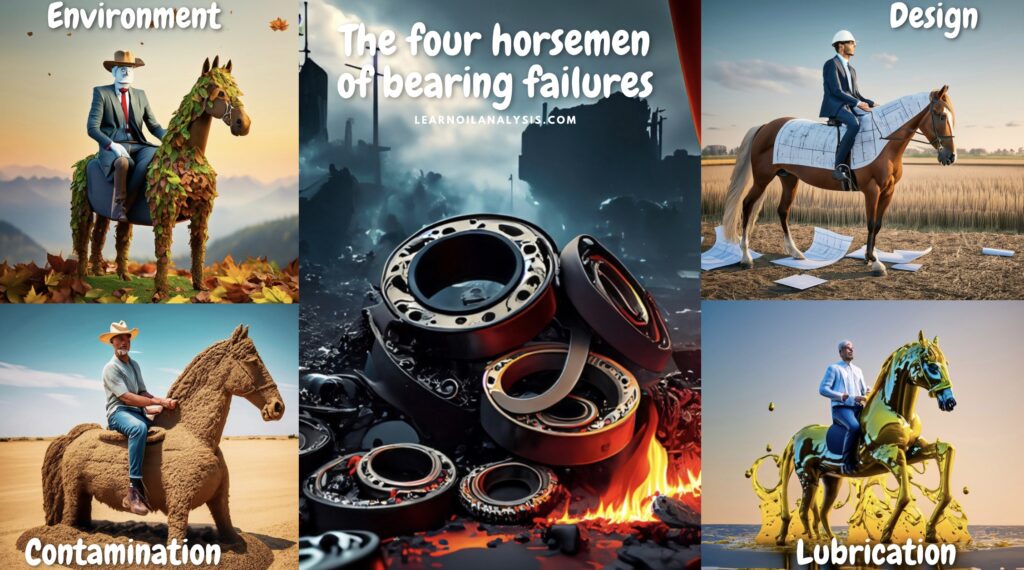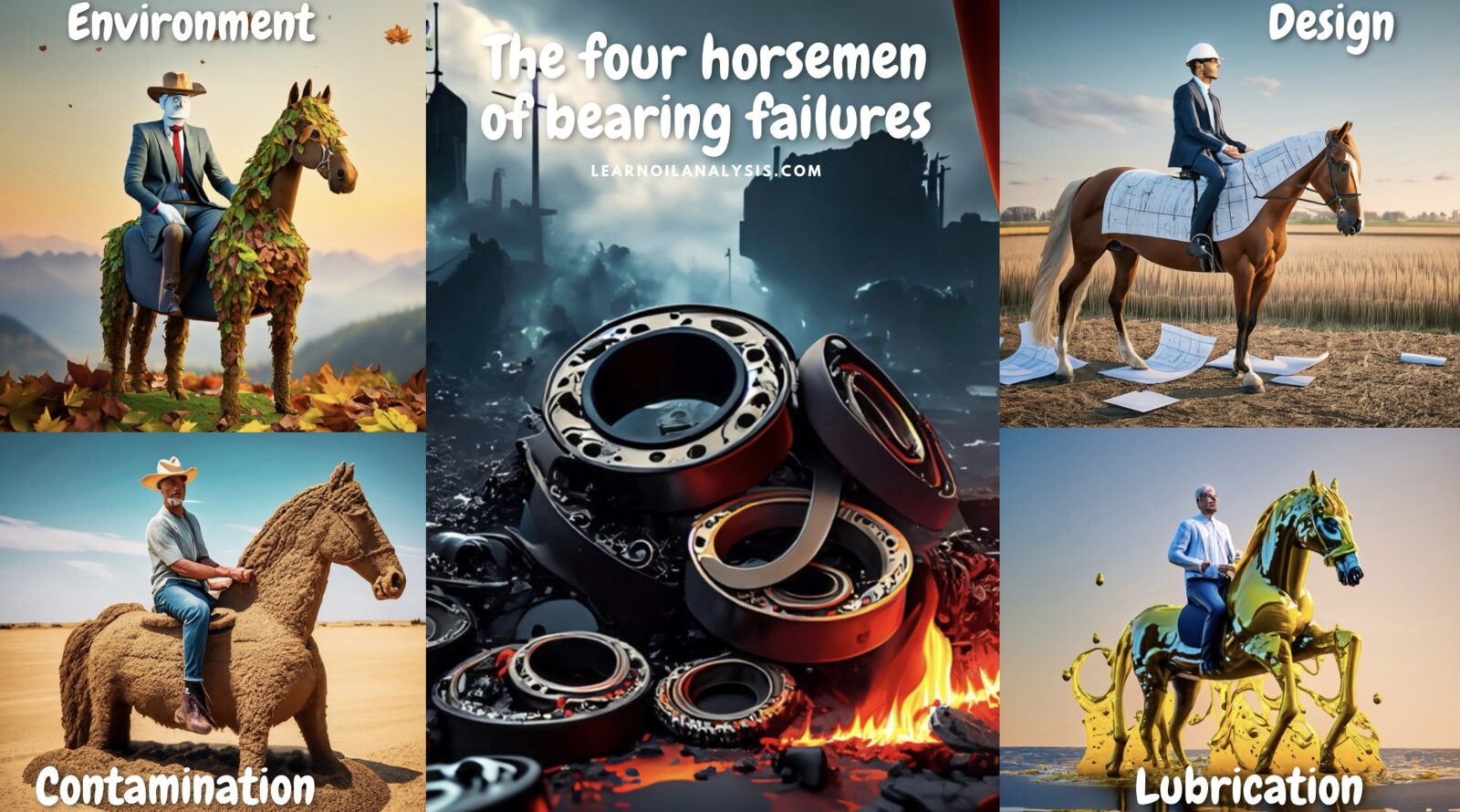Bearings are fundamental to machinery all across the world. These unsung mechanical heroes operate silently in the background, shouldering heavy loads and high speeds day after day. They support over 99% of all rotating machinery. If it moves, rotates or spins you can be fairly confident it has a bearing moving it. Bearings take a licking and keep on ticking – at least when cared for properly. But they aren’t invincible. Bearings are some of the most poorly looked after lubricated systems. Now here’s a sad but true statistic – 90% of bearings meet an untimely demise before their time, never reaching their designed life. Don’t shed too many tears though. With the right TLC, bearings can last potentially 10 or even 20 times longer. I’ll show you how.
First, we need to establish why bearings matter. These rolling warriors allow shafts, gears, fans, wheels, and just about anything that rotates to do their job with minimal friction. Without bearings, machines would grind to a halt faster than you can say “seized shaft.”
The Four Horsemen of Bearing failures

I call them the four horsemen: contamination, design and install mistakes, environment, and lube problems. They’re out to cut short your bearing’s lifetime. Here’s how to send them packing.
Disclaimer: The term ‘Four Horsemen’ is used in this article as a metaphorical expression to discuss common causes of bearing failures in oil analysis. The phrase is borrowed from the Book of Revelations, where it refers to the Four Horsemen of the Apocalypse. I have tried to be sensitive to this in the article and the usage here is not intended to offend or belittle any religious or cultural beliefs. The four horsemen has been used in multiple television, books, newspapers, speeches and media references over the years to explain apocalyptic landscapes in popular culture as the story is so well known. In these circumstances it is used solely for its illustrative value in describing challenges faced in bearing failures and maintenance. You can find out more about its original religious usage by consulting the relevant religious texts and your local faith institutions. If anyone is still offended after having read the article please drop me an email using the contact button on the website and I will gladly rewrite it excluding the reference for the website. Oil analysis should always be fun and be inclusive to all.
Adam learn oil analysis founder
1. Contamination – Tiny Particles, Big Problems
Ever heard the phrase “death by a thousand cuts?” That’s exactly what happens when tiny dirt, metal particles, moisture, or other contaminants work their way into bearings. As the rollers or balls roll over the abrasive, they grind microscopic grooves into the raceways. After thousands of cycles, it adds up to major wear, overheating, fatigue, and eventual failure.
How tiny are we talking? Particles as small as 10 microns big (a human hair is 80 microns for comparison) can remove 1% of the raceway surface depth after only 10 operating hours. Yikes! You can see how that 10 year bearing can quickly fail in a matter of months when contamination is not controlled.
Solutions: Positive air pressure or purge nitrogen systems can literally blow contaminants away in air lubricated systems. Labyrinth and taconite seals lock out more junk than standard seals. And robust filtration keeps lubricants clean. Remember, an ounce of prevention beats a pound of cure (metric analogies exist too). Even on lube systems with semi solid or solid greases that lock out most contaminants when they become contaminated with dirt, water or build up of metal they are extremely hard to remove without regreasing.
2. Design, installation and Mounting Mistakes – Stresses Start at the Beginning
Ever bought a piece of Ikea (other flat pack furniture suppliers available) furniture only to have it fall apart? No? Perhaps why I am banned from making flat packs in our house these days?
However, even if that has never happened to you, that is what happens when bearings are mounted improperly. If the shaft, housing, or bearing become distorted even a smidge, watch out. The stress accumulates, and before you know it, you’ve got raceway damage or roller cages cracking up. This can lead to abnormal vibration literraly shaking the bearing apart or misalignments.
Solutions: Have a heart-to-heart with your bearings. Read the manufacturer’s mounting instructions (hopefully better than IKEA ones) and follow them meticulously. Use the proper tools, apply force evenly, check alignments like a hawk, and avoid using crude hammers or botched pullers. Take your time, do it right.
3. Environmental Factors – When Surroundings Get Seedy
Bearings operate as part of bigger mechanical and electrical systems. If the ambient environment isn’t amenable, bearing life suffers. Let’s look at a few scenarios:
High temps: Every 20°C over the normal rating can cut bearing life in half and lubricant life by a quarter. Yowza!
Electric currents: Even small amounts of current cause electrical arcing that damages those finely polished surfaces.
Vibration: Sustained shakes rattle cages and increase wear.
Solutions: Account for thermal expansion, isolate bearings electrically, and dampen vibrations properly. Don’t just plop your bearings in place and call it a day. Control their ecosystem.
4. Lubrication – The Lifeblood
Ever try cycling with a rusted chain? Lubrication makes everything run smoothly. Neglect it and you’ll be saddled with problems especially of the lube oil horseman of bearing failures variety. Lube issues can include:
- Insufficient lube causes overheating and actual welding(!) of surfaces.
- Oxidation from heat degrades oil into varnish deposits and abrasives.
- Too long between re-lubes allows wear and corrosion.
- Most bearings tend to be over-greased leading to overheating of the system.
Solutions: Grease-sealed bearings last 2-3 times longer than oil-lubed ones thanks to keeping out gunk, but be mindful of other issues such as difficulty to remove contaminants once they enter the system. Re-lube at optimal intervals, choose the right viscosity and additives, and monitor lube condition closely.
The Oil and Grease Analysis Advantage
Here’s where oil and grease analysis save the day. Lab tests detect:
- Wear particles signaling damage
- Contaminants like water or dirt
- Oil condition and additive levels
- Acid buildup and oxidation
For greases, tests reveal:
- Softening or hardening
- Oil bleeding/separation
- Roller wear particles
- Effective oil change intervals
- Wear metal build up including identification of problems like misaligned bearings etc
Catching problems early keeps bearings rolling. Sampling at regular intervals can optimise lubricant change-outs too. Analysis data helps target root causes when failures do occur.
Think of it as your bearing’s regular check-up at the doc’s office to tackle your blood pressure before the heart attack.
There you have it friends – the four horsemen of bearing destruction and how to tame them. With the right prep, protection, and TLC, your bearings will thrive for the long run.
If you want to learn more about how to keep your bearing in tip top condition and how to use oil and grease analysis to do this click the contact us button below and get in touch.


